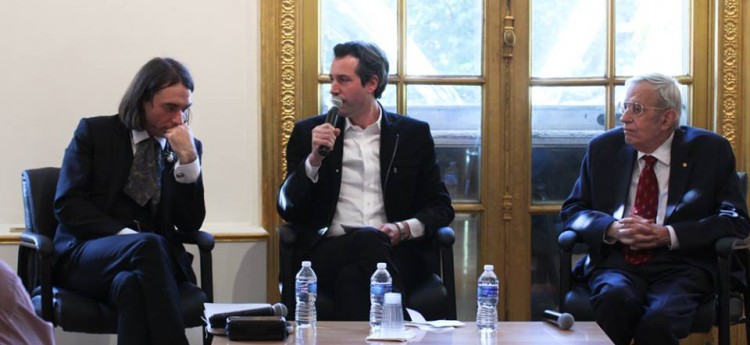Remembering John F. Nash, Jr.

Dear friends,
When a man dies, a whole world fades to black. And when this man is such an intellectual genius as John Nash, a whole constellation of universes with its own internal, unique architecture disappears.
John Nash and his wife, Alicia, were tragically killed in a car crash in New Jersey on Saturday, May 23.
Some of the planets in Nash’s stratosphere were described in his prolific works throughout his life—mechanisms of stability in human interaction with the Nash equilibrium; the behavior of the physical world through the Boltzmann equation, among many other astounding achievements. Nash altered the ordinary orbits of intellectual life by uncovering unprecedented discoveries in nonsmooth embeddings, geometry, and convex integration. He opened up a new realm of thinkable objects and tools, especially with his revolutionary approach to partial differential equations.
But other planets and galaxies remain unexplored although they fundamentally took form in John Nash’s beautiful mind. Last October 19 at Albertine, we had the great fortune to glimpse some of these known and unknown planets during a discussion between John Nash and Cédric Villani. Before launching into his future research goals, including gravitational fields, dark matter, and the mathematical evidence for four dimensions, Nash quipped, in prescient self-deprecation,
“Now, here I’m old, I could die pretty soon, this could be forgotten if I just have it on my web page…so maybe I should make an archive publication”
John Nash’s intense ambition remained alive at the age of 86. In this Internet age, his inordinate success reminds us how much ground we can cover with mere paper and pencil—and that face-to-face collaboration and intense reflection can sometimes drive a concept to fruition more successfully than any bandwidth.
But beyond that, the unknown constellations that were swept away with the death of John Nash will forever hover in the minds of men. One day, perhaps, others will rediscover them.
We close with a quote by Cédric Villani from his recently translated memoir on his journey with mathematics, Birth of a Theorem. Villani articulates the luminance that Nash brought to mathematics and highlights his own role in carrying Nash’s intellectual legacy to new heights, even after his passing.
Finally, one morning, the reality of the situation was obvious to all: by combining all the contributions of his various collaborators with unsurpassable skill, Nash had proved the theorem–like an orchestra conductor, or a film director, who gets each player to play his part of the score, or the script, just perfectly.
Nash founded a new style of analysis, and with it a tradition that I am proud to carry on in my own way.
We hope that curious minds will continue to take cues from the maestro of mathematics, long after his stardust fades.
Antonin Baudry, Founder of Albertine
Kimberly Corliss, Bookseller

